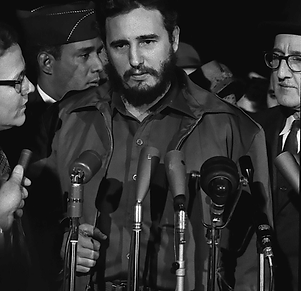
History
History and Demographic Information
Before European colonization, Cuba was inhabited primarily by indigenous peoples such as the Taíno, Ciboney, and Guanajatabey tribes. These people lived on the island for centuries before Christopher Columbus arrived in 1492. In 1492, Cuba was under the rule of Spain when Christopher Columbus claimed the island for the Spanish crown during his exploration voyage; he named it "Juana" after the Prince of Asturias. European colonization started in 1492 when Christopher Columbus claimed the island, and it continued until 1898 when the Spanish-American War ended Spanish rule in Cuba. Cuba gained independence from Spain after the Spanish-American War of 1898. The United States and Cuban forces defeated Spain, and Cuba became the Republic of Cuba on May 20, 1902. The key government change that helped liberate Cuba was the United States intervention in the Spanish-American War, which ultimately led to Spain relinquishing control of Cuba and granting it independence, facilitated by the Platt Amendment that allowed the U.S. to maintain some influence over the new Cuban government; this occurred after a long period of Cuban rebellions against Spanish rule. The Cuban War of Independence, also known in Cuba as the Necessary War, fought from 1895 to 1898, was the last of three liberation wars that Cuba fought against Spain, the other two being the Ten Years' War (1868–1878) and the Little War (1879–1880). Fidel Castro was born on August 13, 1926, and died on November 25, 2016. He was the political leader of Cuba from 1959–2008, he transformed his country into the first communist state in the Western Hemisphere. Castro became a symbol of the communist revolution in Latin America. He held the title of premier until 1976 and began a long tenure as president of the Council of State and the Council of Ministers. He handed over provisional power in July 2006 because of health problems and formally relinquished the presidency in February 2008.
Cuba is a multiracial society with people of European, Indigenous, Mestizo, and African descent. In Latin America, Mestizo means a man of mixed race, especially one of Spanish and Indigenous descent. Mulatto means of African descent, white people are often referred to as Criollos. At the time of the 2012 census, Cuba's population was sixty-four percent white, twenty-seven percent mestizo or mulatto, and nine percent Black. A small minority centered in Havana is of Chinese descent. The Spanish people in the country are from the Spanish colonization. The African people in the country were from slavery when colonization was happening. The Indigenous people in the country are from before the colonization of Cuba.

Revolution

Fidel Castro and Soviet leader Nikita Khrushchev appear together

Fidel Castro

Leaders of the Cuban Revolution march at the head of a victory parade
Citations
American Experience. “Fidel Castro (1926 - 2016).” Pbs.org, American Experience, 12 Dec. 2017, www.pbs.org/wgbh/americanexperience/features/castro-fidel-castro/. Accessed 10 Mar. 2025.
“Environment and Conflict at the Dawn of the 1959 Cuban Revolution — Princeton University Humanities Council.” Princeton University Humanities Council, 2025, humanities.princeton.edu/event/environment-and-conflict-at-the-dawn-of-the-1959-cuban-revolution/. Accessed 10 Mar. 2025.
Syeda, Seema. “The Cuban Revolution | Military History Matters.” Military-History.org, 10 Jan. 2019, www.military-history.org/cover-feature/the-cuban-revolution.htm. Accessed 10 Mar. 2025.
“World Geography & Culture Online - Country Page.” Infobase.com, 2020, fofweb.infobase.com/wgco/Country.aspx?Page=1&iPin=M0019718. Accessed 14 Feb. 2025.